Resources
About Us
Skin Analyzer Market by Product Type (Portable/Handheld Skin Analyzers, Professional Clinical Devices, Smart Mirror/AI-Based Systems), Technology (Spectroscopy-Based, Image Processing/AI Systems, Multispectral Imaging), Distribution Channel, End User, and Geography - Global Forecast to 2032
Report ID: MRHC - 1041476 Pages: 250 Apr-2025 Formats*: PDF Category: Healthcare Delivery: 24 to 72 Hours Download Free Sample ReportReport Overview
This comprehensive market research report analyzes the rapidly expanding skin analyzer market, evaluating how advanced diagnostic technologies are transforming skincare and dermatology to deliver personalized solutions, enhance treatment efficacy, and improve clinical outcomes across various applications. The report provides a strategic analysis of market dynamics, growth projections till 2032, and competitive positioning across global and regional/country-level markets.
Market Dynamics Overview
Key Market Drivers & Trends
The skin analyzer market is primarily driven by growing consumer awareness of skin health, advancements in non-invasive diagnostic technologies, the rising incidence of skin disorders, and the increasing use of AI and imaging technologies in dermatology. The industry's landscape is being transformed as traditional visual assessments give way to technology-enhanced skin analysis. The integration of smartphone connectivity and cloud storage for tracking skin changes over time is also gaining significant traction. Furthermore, the growing popularity of portable devices for home use, along with the rise of subscription-based skin analysis services, is further driving market expansion, particularly in the cosmetic retail and personal care sectors.
Key Challenges
Despite its growth potential, the skin analyzer market faces several challenges, including the high upfront costs of advanced analyzer systems, regulatory hurdles for medical-grade devices, and the difficulty of achieving consistent analysis results across varying lighting conditions and skin types. Moreover, concerns over data privacy in skin analysis applications create compliance challenges, while technical limitations in analyzing diverse skin types and conditions continue to pose significant obstacles, potentially hindering market adoption in certain demographics.

Click here to: Get a Free Sample Copy of this report
Growth Opportunities
The skin analyzer market presents numerous high-growth opportunities. The integration of AI and machine learning is enhancing analysis capabilities, leading to more accurate and personalized skincare solutions. Another key opportunity lies in expanding into emerging markets, particularly in Asia and Latin America, where the beauty and dermatology sectors are rapidly growing. Additionally, the development of multi-parameter analysis systems that can address multiple skin concerns at once offers significant growth potential. The rise of telehealth and remote dermatology consultations, accelerated by recent healthcare trends, is further boosting demand for skin analyzers. Meanwhile, subscription-based services and recurring revenue models are helping to lower upfront costs and ensure continuous skin monitoring.
Market Segmentation Highlights
By Product Type
The professional clinical devices segment is expected to command the largest share of the overall skin analyzer market in 2025, owing to their comprehensive features, high precision, and strong presence in dermatology practices and skin clinics. These devices typically offer multifunctional analyses, including moisture measurement, sebum analysis, elasticity testing, and advanced imaging, making them essential tools for medical diagnostics and treatment planning in professional settings. However, the Smart Mirror/AI-Based Systems segment is projected to experience the fastest growth through 2032. This growth is driven by increasing consumer demand for at-home skin monitoring, rapid advancements in AI algorithms for skin analysis, and the growing appeal of interactive, personalized skincare solutions. Combining high-resolution cameras with advanced AI, these systems provide accessible yet detailed skin assessments and track progress over time, gaining popularity among both affluent consumers and beauty establishments.
By Technology
The image processing/AI systems segment is expected to command the largest share of the overall skin analyzer market in 2025, due to their versatility, affordability, and ongoing advancements in image recognition capabilities. These systems use digital imaging combined with artificial intelligence to assess various skin parameters, identify issues, and recommend treatments based on visual data analysis. However, combined technology systems are expected to see the highest growth rate through 2032. This is mainly due to their ability to provide more comprehensive and accurate skin assessments by integrating multiple technologies, such as spectroscopy, imaging, and AI algorithms. As the demand for more precise, multi-dimensional skin analysis increases, these integrated systems are becoming the preferred choice for overcoming the limitations of single-technology solutions.
By End User
The dermatology clinics and medical practitioner segment are expected to hold the largest share of the global skin analyzer market in 2025, primarily due to their early adoption of advanced diagnostic technologies, capacity to invest in high end equipment, and critical need for objective tools to assess skin health. These professional users rely on skin analyzers for accurate diagnoses, treatment planning, and ongoing patient monitoring. On other hand, the individual consumers segment is projected to witness the fastest growth during the forecast period of skin analyzer market. This growth is mainly driven by the increasing availability of affordable, user-friendly devices, a rising interest in at home skincare technology, greater consumer awareness of preventive skin health, and a growing demand for personalized beauty solutions.
By Geography
North America is expected to hold the largest share of the global skin analyzer market in 2025, followed by Europe, due to its advanced healthcare infrastructure, high consumer awareness and spending on skincare, a strong presence of leading market players, and a history of early adoption of innovative technologies. These factors have helped establish North America as a dominant market, where consumers are highly engaged with skincare solutions and medical professionals are quick to implement new diagnostic tools. On the other hand, the Asia Pacific region, particularly China, South Korea, and Japan, is experiencing the fastest growth during the forecast period. This growth is primarily driven by the rapidly expanding beauty and personal care industries, increasing disposable incomes, a strong beauty culture, and rising awareness of skin health in emerging economies. In addition, the Middle East & Africa region is showing significant growth potential, particularly with the rise of beauty tourism and the increasing adoption of advanced skincare technologies in luxury markets.
Competitive Landscape
The global skin analyzer market features a diverse competitive landscape with established medical device manufacturers and dermatology equipment specialists alongside technology-driven startups bringing innovative AI and imaging solutions to market.
The overall skin analyzer market is evolving with increasing collaborations between traditional skin analysis device manufacturers and AI software developers, while companies from related sectors such as cosmetics and consumer electronics are entering the market with fresh approaches. Leading manufacturers are incorporating cloud connectivity for continuous skin analysis and developing more inclusive technologies that provide accurate results across various skin tones and types.
The key companies operating in the global skin analyzer market are Canfield Scientific, Inc., FotoFinder Systems GmbH, Courage+Khazaka electronic GmbH, Johnson & Johnson Consumer Inc. (Neutrogena brand), Cortex Technology ApS (DermaLab brand), Bomtech Electronics Co., Ltd., New Kinpo Group (HiMirror brand), DJM Medical Instruments GmbH, JMSY Co., Ltd., Miravex Limited, Bio-Therapeutic, Inc., Taberna Pro Medicum AG, Pixience SAS, Callegari S.p.A., and DermaQuip, Inc among others.
|
Particulars |
Details |
|
Number of Pages |
250 |
|
Format |
PDF & Excel |
|
Forecast Period |
2025–2032 |
|
Base Year |
2024 |
|
CAGR (Value) |
15.4% |
|
Market Size (Value)in 2025 |
USD 147.6 Million |
|
Market Size (Value) in 2032 |
USD 402.8 Million |
|
Segments Covered |
By Product Type
By Technology
By End User,
|
|
Countries Covered |
North America (U.S., Canada) |
|
Key Companies |
Canfield Scientific, Inc., FotoFinder Systems GmbH, Courage+Khazaka electronic GmbH, Johnson & Johnson Consumer Inc. (Neutrogena brand), Cortex Technology ApS (DermaLab brand), Bomtech Electronics Co., Ltd., New Kinpo Group (HiMirror brand), DJM Medical Instruments GmbH, JMSY Co., Ltd., Miravex Limited, Bio-Therapeutic, Inc., Taberna Pro Medicum AG, Pixience SAS, Callegari S.p.A., DermaQuip, Inc. |
The Global Skin Analyzer Market was valued at $130.0 million in 2024. This market is expected to reach $402.8 million by 2032 from an estimated $147.6 million in 2025, at a CAGR of 15.4% during the forecast period of 2025–2032.
The global skin analyzer market is expected to grow at a CAGR of 15.4% during the forecast period of 2025–2032.
The global skin analyzer market is expected to reach $402.8 million by 2032 from an estimated $147.6 million in 2025, at a CAGR of 15.4% during the forecast period of 2025–2032.
The key companies operating in this market include Canfield Scientific, Inc., FotoFinder Systems GmbH, Courage+Khazaka electronic GmbH, Johnson & Johnson Consumer Inc. (Neutrogena brand), Cortex Technology ApS (DermaLab brand), Bomtech Electronics Co., Ltd., New Kinpo Group (HiMirror brand), DJM Medical Instruments GmbH, JMSY Co., Ltd., Miravex Limited, Bio-Therapeutic, Inc., Taberna Pro Medicum AG, Pixience SAS, Callegari S.p.A., and DermaQuip, Inc.
Major trends shaping the market include shift from traditional visual assessment to technology-assisted skin analysis, integration of smartphone connectivity and cloud-based data storage, rising focus on multi-ethnic skin analysis capabilities, incorporation of virtual try-on and treatment simulation features, and growth of skin microbiome analysis technologies.
In 2025, the professional clinical devices segment is expected to account for the largest share of the skin analyzer market; based on technology, image processing/AI systems hold the largest share of the overall market in 2025; and the dermatology clinics & medical practitioners end-user segment is expected to account for the largest market share in 2025.
North America leads the global market followed by Europe due to advanced healthcare infrastructure, high consumer awareness, and early technology adoption. Asia-Pacific is witnessing the highest growth rate driven by rapidly expanding beauty industries, increasing disposable incomes, and strong beauty culture, particularly in South Korea, Japan, and China.
The growth of this market is driven by rising consumer awareness about skin health, technological advancements in non-invasive diagnostic technologies, growing prevalence of skin disorders, increasing adoption of AI and imaging technologies in dermatology, and rising demand for evidence-based skincare product recommendations.



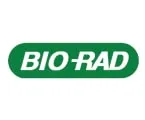
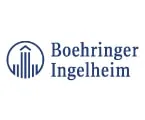

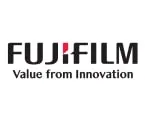
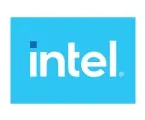
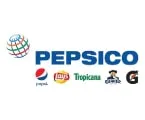
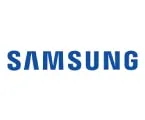


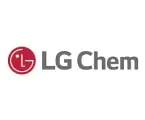


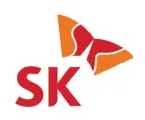
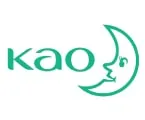

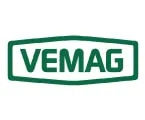
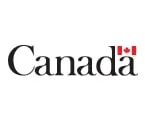




Published Date: Jan-2025
Published Date: Apr-2015
Published Date: Jun-2022
Please enter your corporate email id here to view sample report.
Subscribe to get the latest industry updates